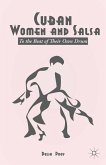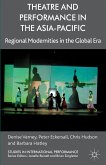Examining corporeal expressions of indigenousness from an historical perspective, this book highlights the development of cultural hybridity in New Zealand via the popular performing arts, contributing new understandings of racial, ethnic, and gender identities through performance. The author offers an insightful and welcome examination of New Zealand performing arts via case studies of drama, music, and dance, performed both domestically and internationally. As these examples show, notions of modern New Zealand were shaped and understood in the creation and reception of popular culture. Highlighting embodied indigenous cultures of the past provides a new interpretation of the development of New Zealand's cultural history and adds an unexplored dimension in understanding the relationships between M?ori (indigenous New Zealander) and P?keh? (non-M?ori) throughout the late nineteenth and into the early twentieth centuries.
"In Performing Indigenous Culture on Stage and Screen: A Harmony of Frenzy, Marianne Schultz argues that performance is central to understanding the history of New Zealand ... the book pushes the conversation about cultural performance forward and succeeds in making her point that understanding New Zealand's history requires an examination of Maori and Pakeha performance. Her approach will be particularly helpful to scholars interested in researching how embodied cultural practices shaped conceptions of race and nation ... ." (Joanna Das, H-ANZAU, H-Net Reviews, May, 2018)
"Schultz's analysis is as comprehensive as it is impressive. Readers will appreciate the meticulous care taken in the footnotes (many of which will prompt readers to take Schultz's ideas further). Moreover, by bringing readers to more contemporary performing arts ... Schultz reminds us that the questions that lay at the heart of her text remain open and subject to our continued interrogation. ... Schultz's book is a valuable contribution that nudges historical and post-colonial debate in New Zealand ... ." (Geoffery Z. Kohe, Dance Research Journal, Vol. 36 (01), 2018)
"Schultz's analysis is as comprehensive as it is impressive. Readers will appreciate the meticulous care taken in the footnotes (many of which will prompt readers to take Schultz's ideas further). Moreover, by bringing readers to more contemporary performing arts ... Schultz reminds us that the questions that lay at the heart of her text remain open and subject to our continued interrogation. ... Schultz's book is a valuable contribution that nudges historical and post-colonial debate in New Zealand ... ." (Geoffery Z. Kohe, Dance Research Journal, Vol. 36 (01), 2018)








